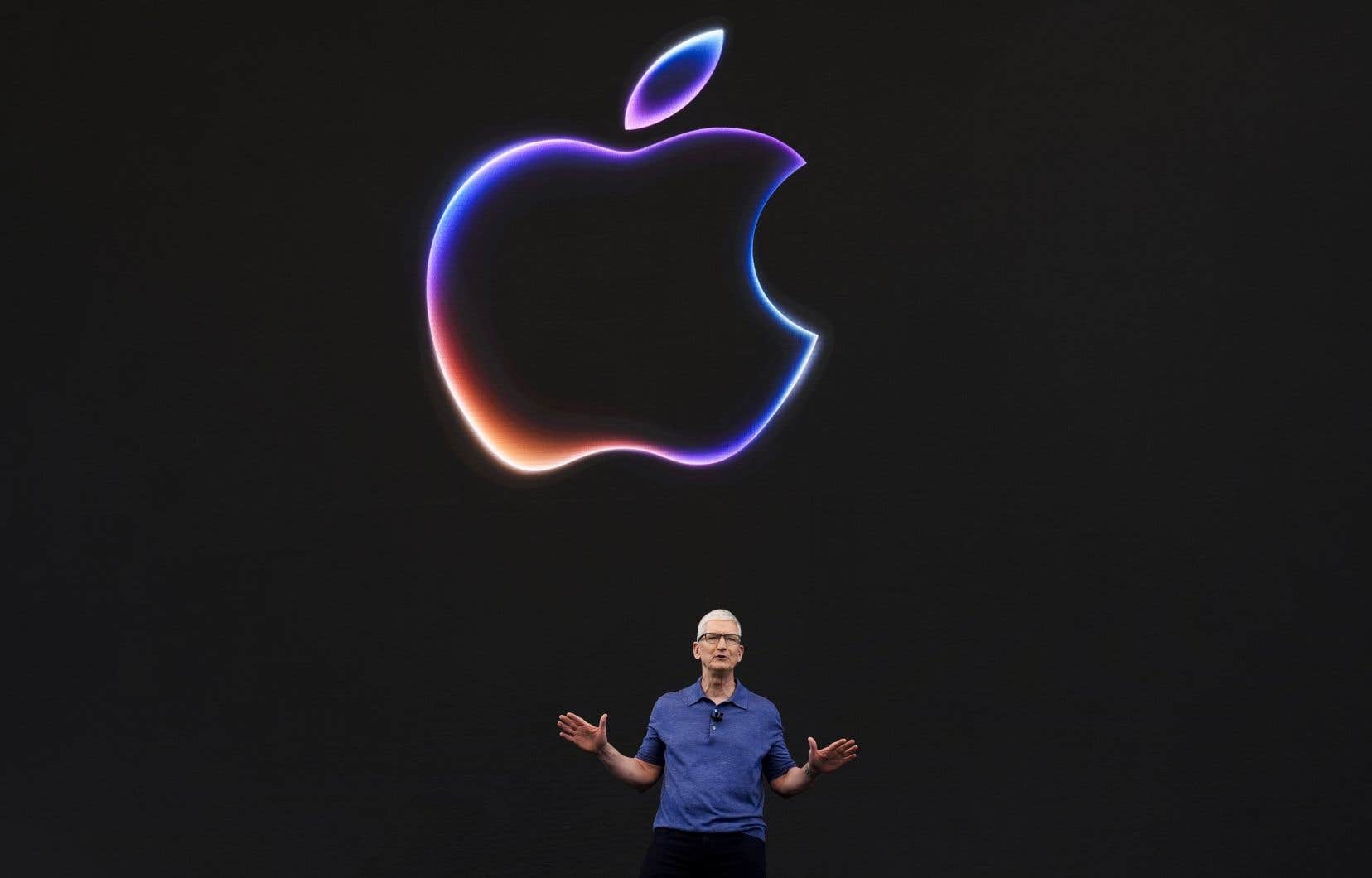The CEO. of Apple, Tim Cook, orchestrated the opening speech of its annual WWDC conference, intended for creators of applications for its various platforms, responding to the increasingly pressing demands of analysts and investors: yes, Apple can do in AI. And in mixed reality too, which will be new for the Canadian market, in particular.
Apple confirmed on the occasion of the 35e edition of its WWDC that its mixed reality headset (augmented and virtual) Vision Pro will be released in the United States, where its first copies have been sold exclusively since last February. The Vision Pro will be sold in Canada starting in mid-July.
Despite sales figures that they suspect are below the initial target, analysts are giving Apple the chance to establish itself in this still relatively emerging market of mixed and virtual reality. A duality seems to emerge with Meta, which holds the upper hand with its range of Quest headsets.
Apple still indicates that it has more than 2,000 applications designed exclusively for its headset, in addition to a million and a half other applications for iPhone and iPad that can be used on this device.
Apple Intelligence
Observers were especially waiting for new developments related to generative artificial intelligence. Apple’s senior management was well aware of this. “Today we are announcing new advanced intelligence features [artificielle] which will be appreciated by the creators of applications for our platforms,” indicated Tim Cook from the outset.
Cook then presented what he calls Apple Intelligence, which brings together the AI applications that Cupertino will add to its iPhones, iPads and Macs later this year (and in English only to start).
Its foundation is based on four elements, he assured: “It must be powerful, intuitive and easy to use, deeply integrated into your applications, personalized to your situation and designed from the start with your privacy in mind. »
With Apple Intelligence, and via the Siri voice assistant, it will be possible to make voice commands to directly access a host of applications and functions on Apple devices. It can also generate content, such as an image of a cake to wish a friend a happy birthday. To create more complex content, Apple uses OpenAI’s ChatGPT service.
Like the generative AIs of OpenAI or Google, Apple Intelligence understands natural language. It can generate summaries of articles, emails and threads, messages, notifications and notification stacks.
Siri will make it much easier to find items across multiple apps, like the Books or Maps apps, Calendar, Mail, and more. Apple promises that its AI assistant will be able to fully understand the context in which it is invoked, to perform the right action every time.
With Siri, users will have an assistant that helps them write or respond to emails, for example, by saying something like “Reply to the invitation request in the form of a poem.” Machine learning will automatically classify conversations based on their content. Apple’s AI-powered virtual assistant will be able to spot promotional codes, or spam messages. It can even create new emojis, or generate avatars from portraits found in the device’s photo library.
Siri will also be able to more closely track stock prices and open different system settings, such as brightness, home screen, and app library settings. Siri’s ability to control the device’s cameras will make taking photos and videos much easier.
Exploded messaging and private life
As is tradition, Apple took advantage of the WWDC conference to present several new software products coming to its various products, including its iPhone, iPad, Mac and Apple Watch.
Most of these new features bring refinement to the interface of each of these devices, without being completely transformative. Some improvements are purely cosmetic. Others give users a little more control to simplify or personalize the way they use the technology.
iOS 18, the latest version of the system that powers the iPhone, illustrates this in the best way: it will now be possible to hide or lock specific applications, to protect their content from prying eyes. At the same time, newer iPhones (iPhone 14 and above) will be able to send text messages via satellite, when no cellular or WiFi signal is nearby.
Apple is also taking the opportunity to strengthen the interaction between the products that make up its hardware ecosystem. For example, Mac owners will soon be able to mirror their iPhone screen to their Mac screen, via a new form of mirroring.
Maybe these few new features will make people less dependent on their phone screen… simply because they will be more dependent on their other screens.
There will be time to debate: most of these new features will only be available this fall, when Apple unveils its next new devices, starting with a new iPhone.
